Each dish offers a glimpse into the island’s rich cultural heritage in Cuban cuisine. This guide sheds light on the nutritional benefits of these traditional meals, providing practical advice on enhancing their health value.
From the zesty tang of citrus-marinated meats to the robust heartiness of black beans and rice, these Nutritional Benefits of Cuban Dishes are a feast for the senses and a source of nourishment. As we dissect the components of these beloved recipes, we’ll reveal how simple tweaks can transform them into healthier versions of themselves, all while maintaining their authentic Cuban soul.
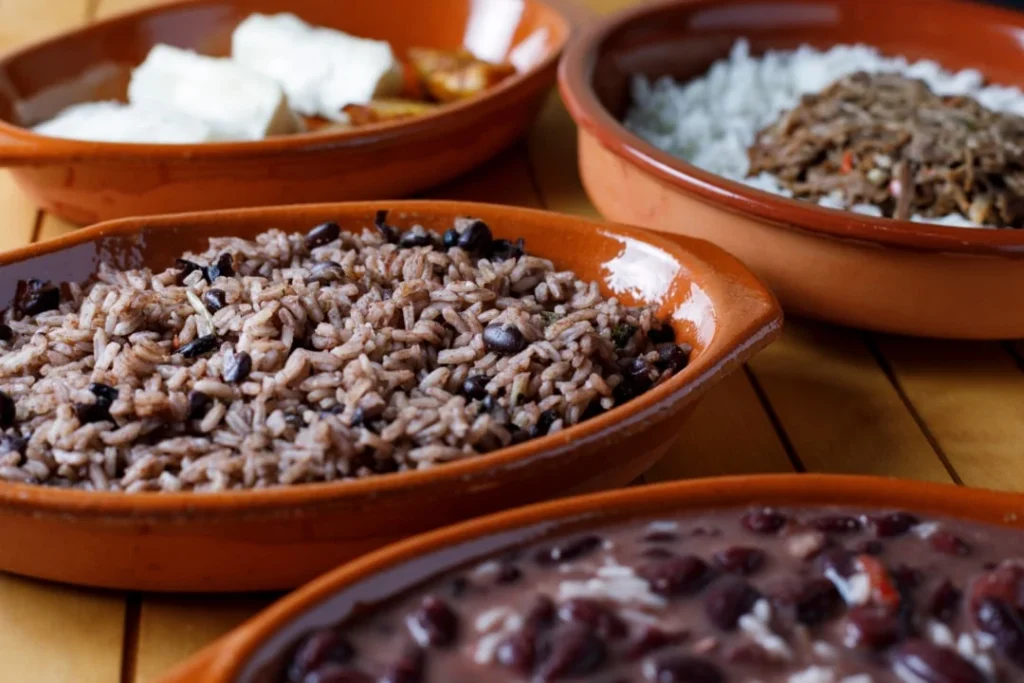
Cuban Ingredients and Their Nutrients
Rice and Beans
A staple of Cuban cuisine, rice, and beans, known as “Moros y Cristianos,” is a dish that exemplifies the fusion of Spanish and African culinary traditions. The combination is not only flavorful but also nutritionally synergistic.
Beans are a fantastic source of protein and fiber, which can help maintain a healthy digestive system and keep you feeling full longer. Rice, particularly in its whole-grain form, provides essential B vitamins and minerals like magnesium and phosphorus.
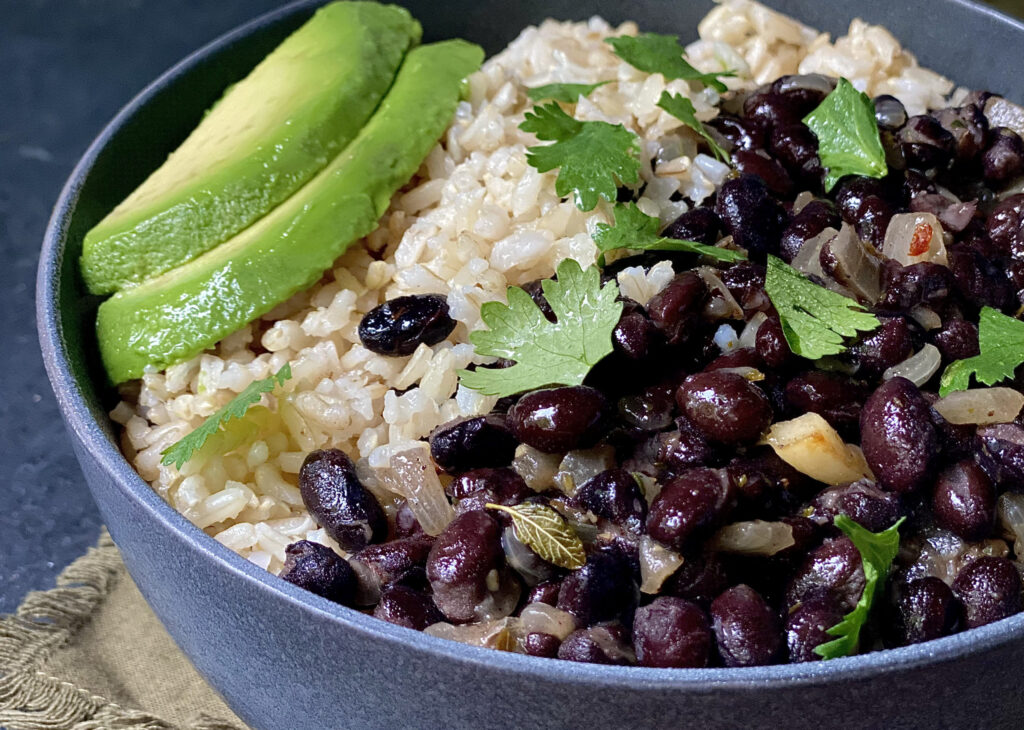
Plantains
Often mistaken for bananas, plantains are a versatile component in Cuban cooking. When green, they’re excellent for frying; when ripe, they add a natural sweetness to dishes.
Plantains are a good source of complex carbohydrates, vitamins A and C, and potassium. They contribute to a balanced diet by offering energy and essential nutrients that support immune function and vision.
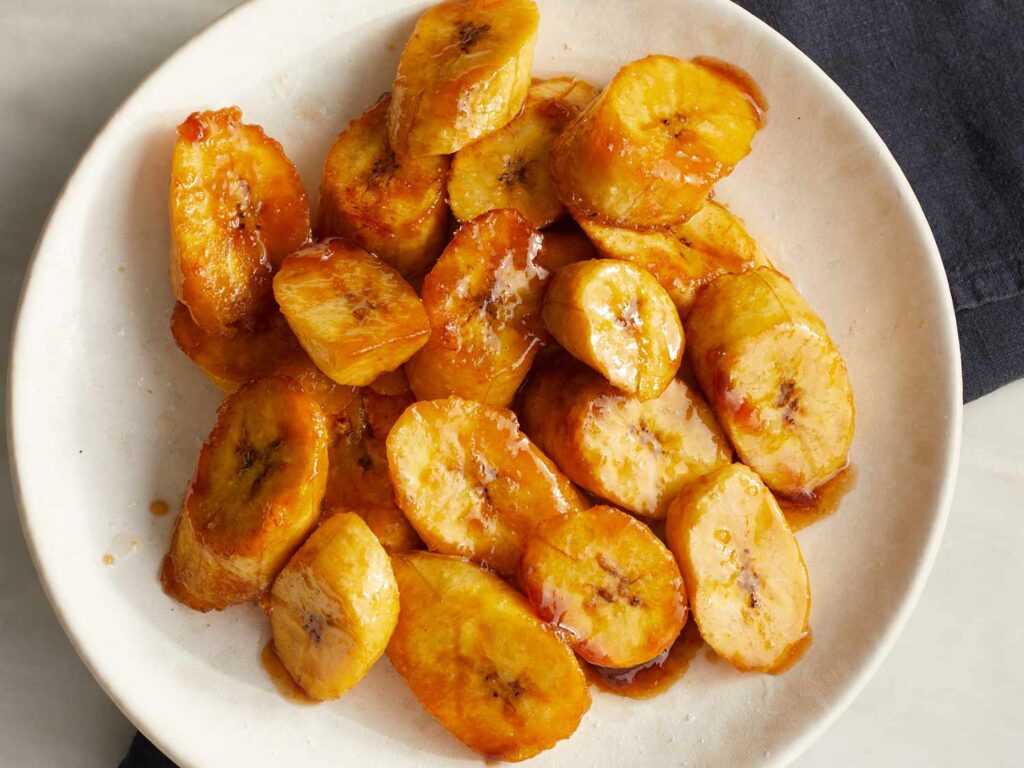
Tropical Fruits
Cuba’s tropical climate yields a bounty of fruits like guava, papaya, and mango, often incorporated into meals or enjoyed as desserts.
These fruits are not just refreshing; they’re packed with antioxidants, vitamins, and dietary fiber. Antioxidants help combat oxidative stress, while fiber content aids in digestion and can help regulate blood sugar levels.
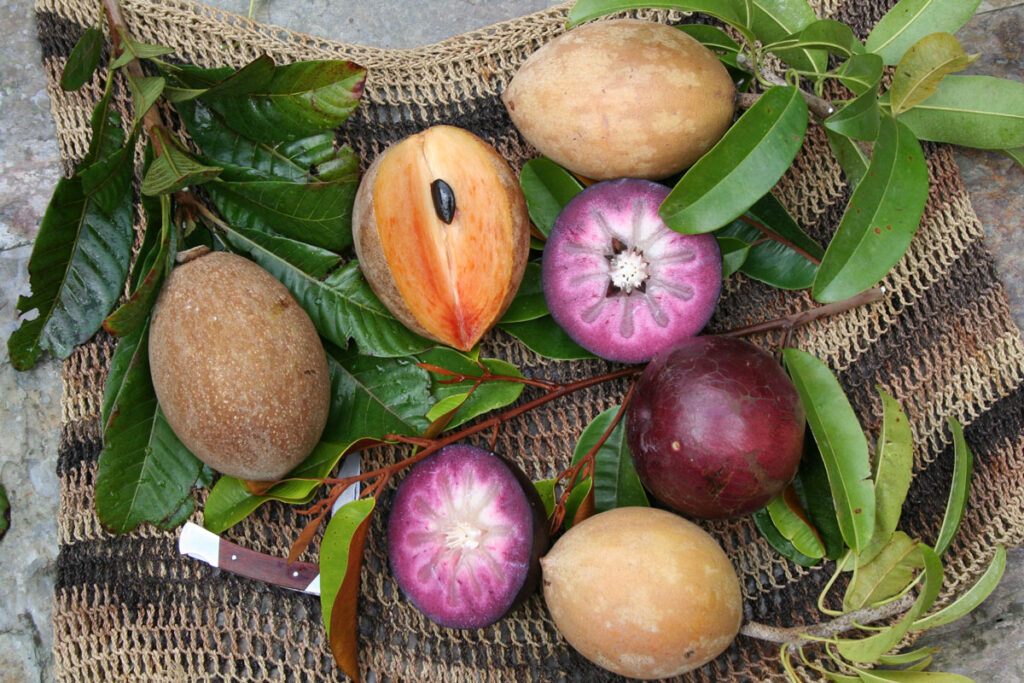
Nutritional Benefits of Cuban Dishes
Ropa Vieja:
This dish, whose name means “old clothes,” is made with shredded beef, tomatoes, onions, and bell peppers. It’s a flavorful mix that provides a high-quality protein from the beef, which is essential for muscle repair and growth. The tomatoes and bell peppers add a dose of vitamin C and other antioxidants, making this dish a well-rounded meal.
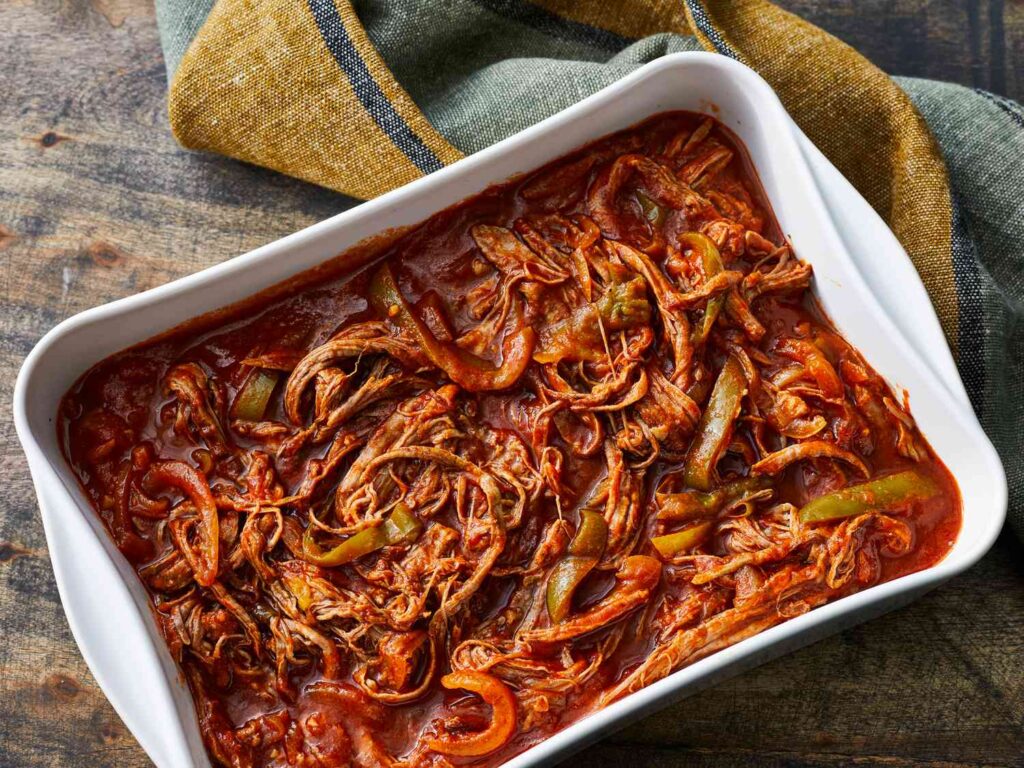
Picadillo:
A classic comfort food, Picadillo is a ground beef hash cooked with tomatoes, raisins, olives, and spices. It’s a dish that balances protein, fats, and carbohydrates. The lean ground beef used in a healthier Picadillo version is a great iron and zinc source. At the same time, tomatoes provide lycopene, an antioxidant linked to reduced risk of chronic diseases.
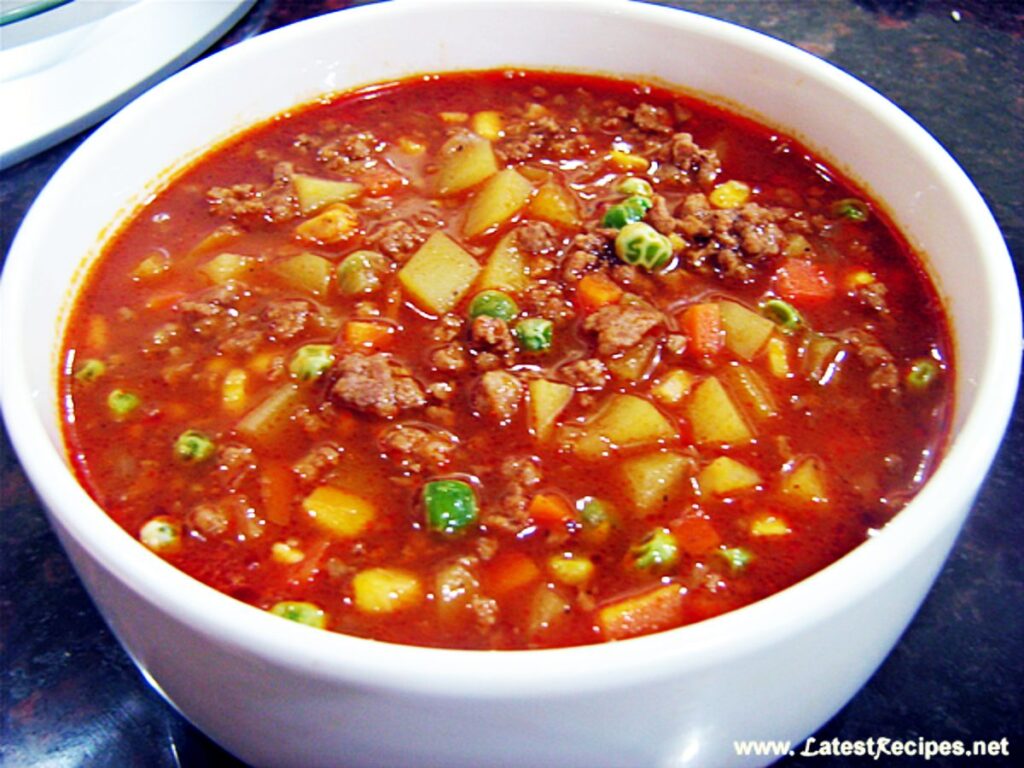
By understanding the nutritional content of these staple ingredients and traditional dishes, one can appreciate the health benefits inherent in Cuban cuisine. Moreover, with a few adjustments, these dishes can be made even healthier, aligning with modern nutritional standards without losing their authentic taste.
Making Cuban Cuisine Healthier
Healthier Cooking Methods
Sautéing over Frying: Traditional Cuban cuisine often involves frying, but sautéing is a healthier alternative that reduces fat content without sacrificing flavor. By using a small amount of healthy oil, such as olive or avocado oil, and cooking over medium heat, dishes retain their delicious taste while being lighter and more nutritious.
Baking Alternatives for Traditional Fried Snacks: Many Cuban snacks are deep-fried, but baking can offer the same satisfying crunch with less oil. For instance, ‘tostones’ (twice-fried plantains) can be baked until golden and crispy, providing a healthier option just as enjoyable.
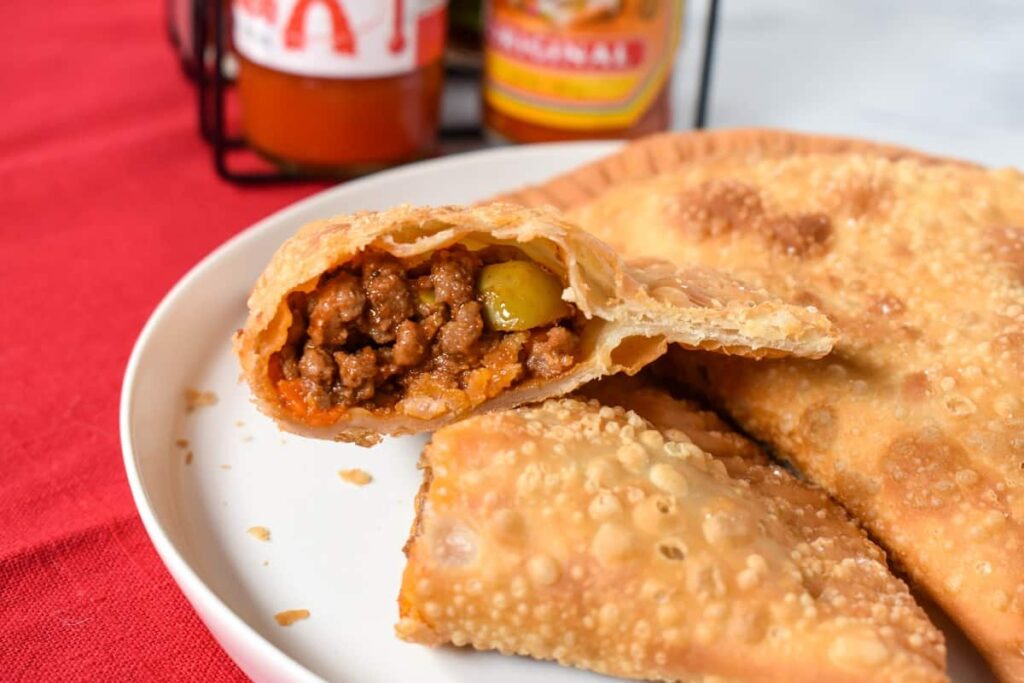
Ingredient Swaps for Better Health
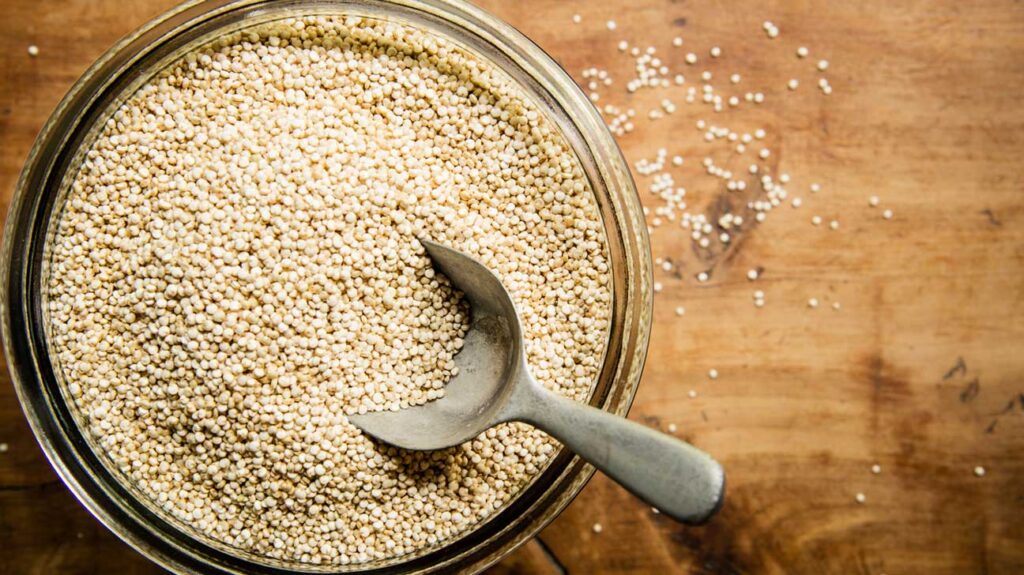
Whole Grains for Refined:
Substituting white rice with brown rice or other whole grains like quinoa can significantly increase the fiber content of a meal.
This simple swap adds nutritional value and helps maintain a feeling of fullness, aiding in weight management.
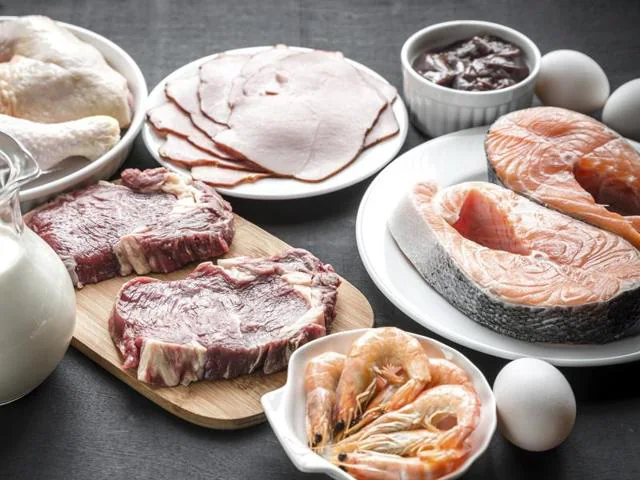
Lean Meats and Seafood:
Opting for lean cuts of meat or incorporating more seafood into the diet can lower the intake of saturated fats.
Using chicken breast or fish instead of pork or beef in dishes like ‘arroz con pollo’ (chicken and rice) or ‘paella’ can make them heart-healthier while still being true to Cuban flavors.
By adopting these healthier cooking methods and ingredient swaps, one can enjoy the essence of Cuban cuisine in a way that supports a balanced and health-conscious lifestyle. These changes allow for a modern take on traditional recipes, aligning with contemporary dietary guidelines without losing the cultural authenticity of the dishes.
Cuban Dishes Reimagined: Modern Twists on Classic Recipes

Vegan and Vegetarian Adaptations: Cuban cuisine can be easily adapted for plant-based diets without losing its essence. For example, ‘ropa vieja’ can be made with jackfruit or mushrooms as a substitute for beef, offering a meaty texture with plant-based benefits. Black beans, a Cuban staple, are already vegan-friendly and packed with protein, making them an ideal base for many dishes.
Low-Sodium and Low-Sugar Variations: Reducing salt and sugar doesn’t mean compromising on taste. Herbs and spices, such as cumin, garlic, and cilantro, can enhance the flavor profile of a dish while minimizing the need for excess sodium. Similarly, natural sweeteners like mashed ripe bananas or pureed dates can offer sweetness to desserts and snacks without the health drawbacks of refined sugar.
By incorporating these modern twists into classic Cuban recipes, we can cater to a wider range of dietary preferences and health requirements. These adaptations preserve the cultural significance of Cuban dishes and promote a more inclusive and health-conscious approach to traditional eating.
Final Thoughts
The nutritional benefits of Cuban cuisine go beyond enjoying its rich flavors; it’s about understanding the impact of each ingredient and cooking method on our health. With their colorful array of spices, grains, and proteins, Cuban dishes offer a unique opportunity to combine pleasure with well-being. Encouraging healthy eating through cultural exploration allows us to appreciate the diversity of food traditions and their potential for adaptation.
By reimagining Cuban classics with a health-conscious twist, we honor the culinary heritage and contribute to a lifestyle that values nutrition without compromising taste. As we integrate these insights into our daily meals, we pave the way for a more informed and health-oriented approach to eating. The essence of Cuban cuisine, characterized by its vibrant flavors and communal spirit, can thus be preserved and enjoyed to support our overall well-being.
Disclosure: Our blog contains affiliate links to products. We may receive a commission for purchases made through these links. However, this does not impact our reviews and comparisons. We try our best to keep things fair and balanced, in order to help you make the best choice for you.
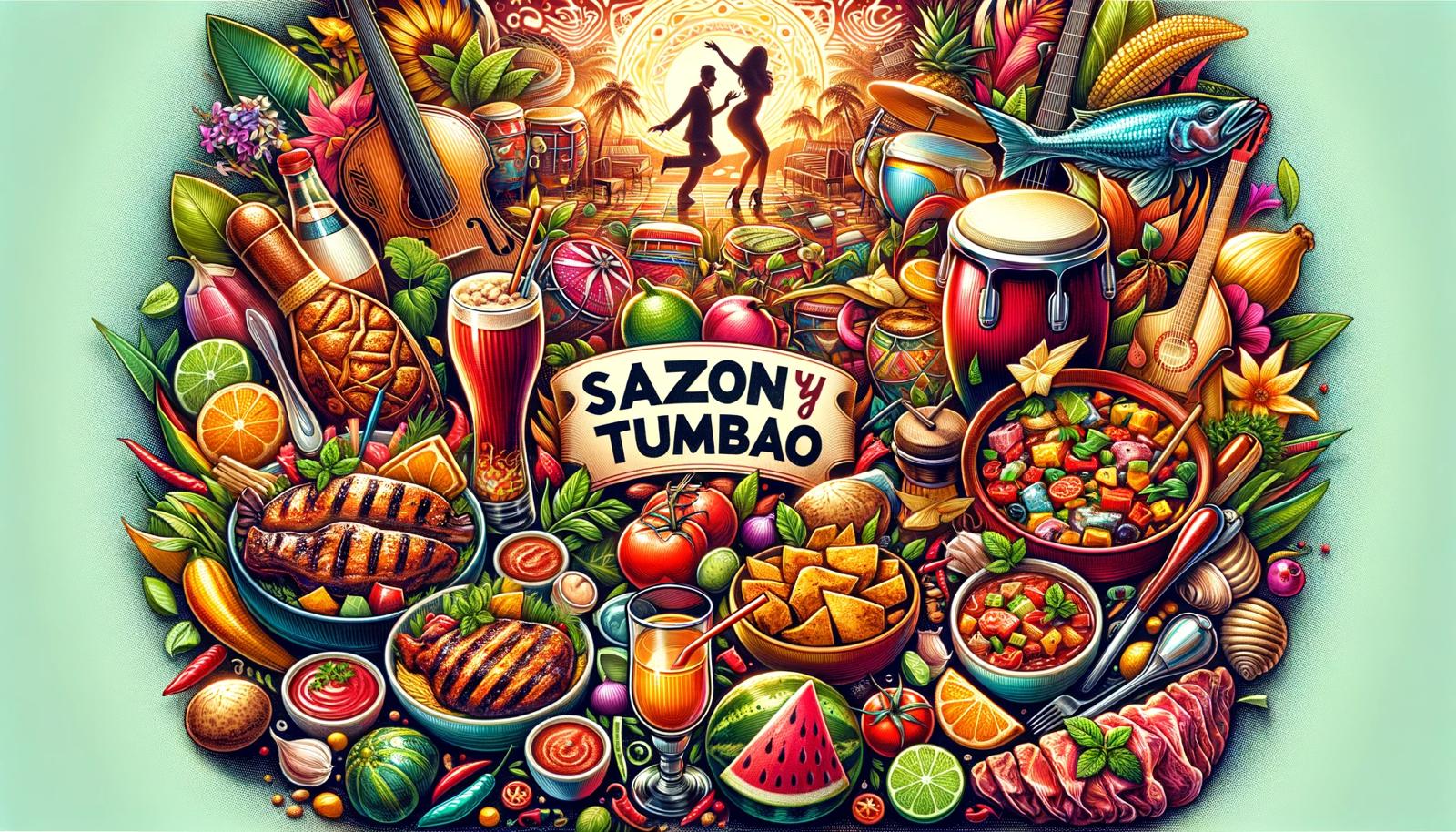
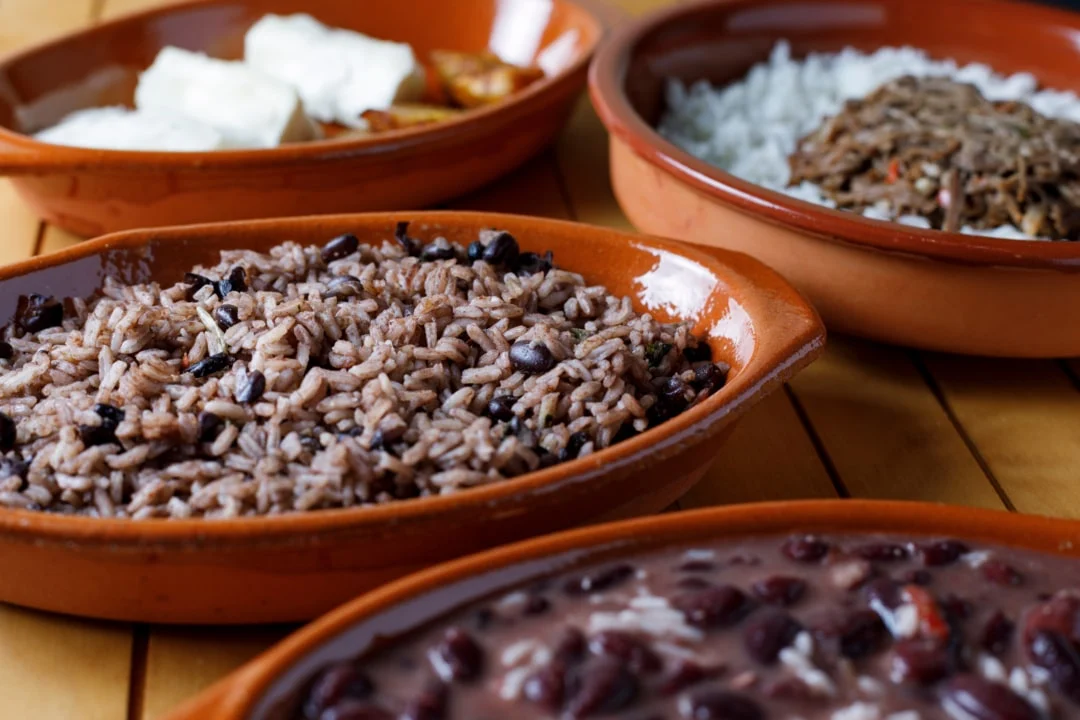

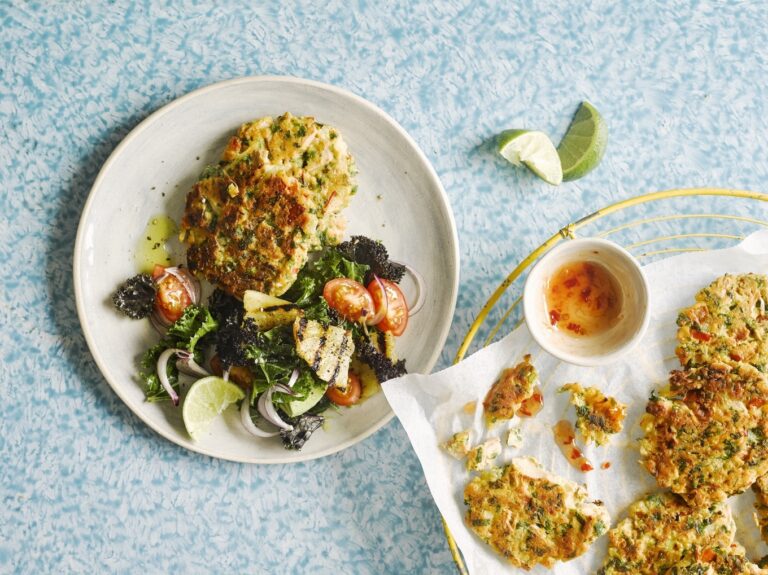
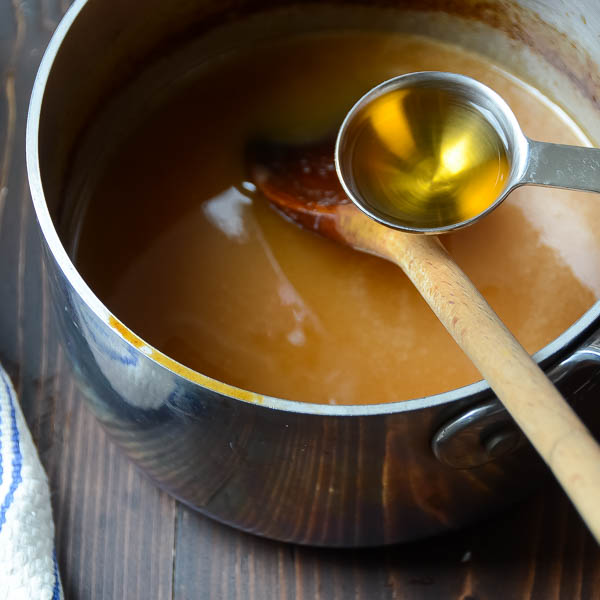
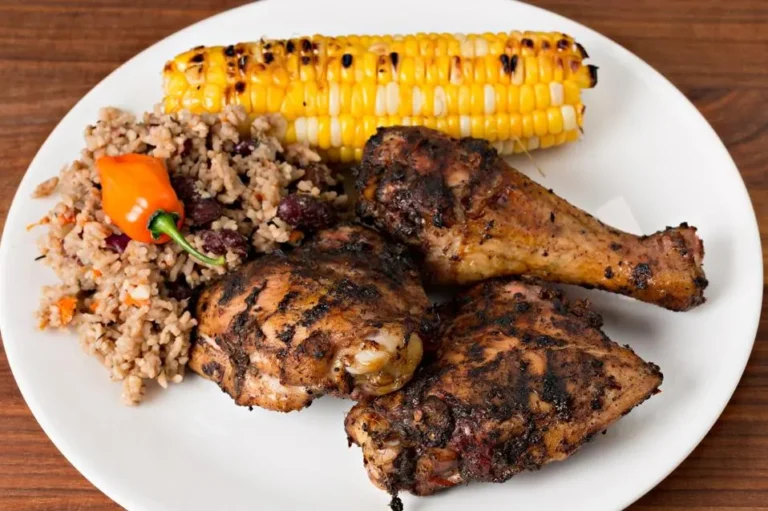
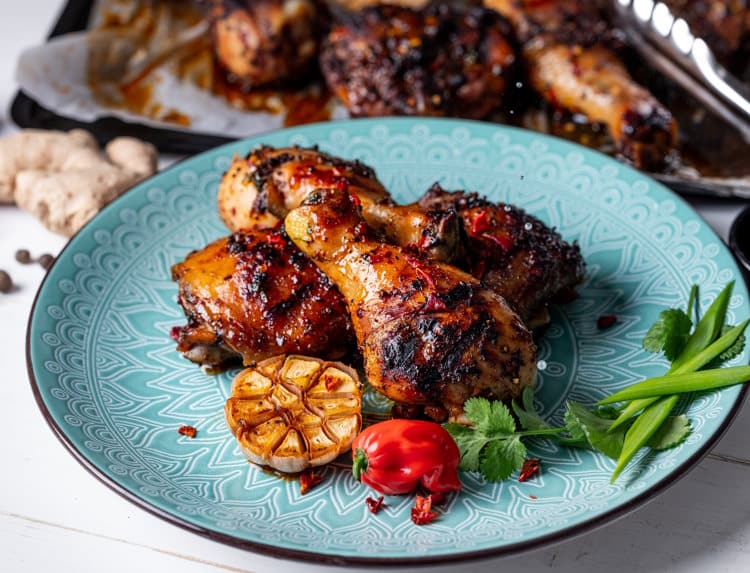

2 Comments